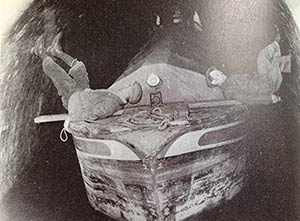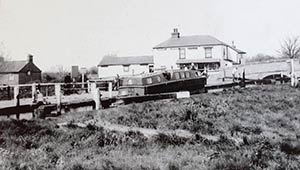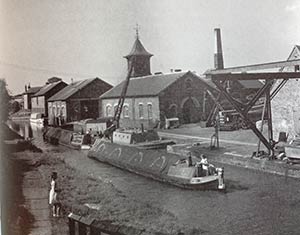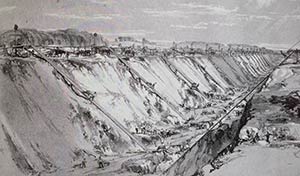The Grand Union Canal is essentially composed of no fewer than eight separate canals, and was built to link the major cities of London, Birmingham, Nottingham and Leicester. The most important part of this network of watery highways was the Grand Junction Canal. This was started at around 1793 in order to create a ‘short cut’ between Brentford, on the western outskirts of London to Braunston in Northamptonshire. Unlike many of its predecessors, the Grand Junction was constructed with 14 foot ‘wide locks’ meaning that for the first time, boats travelling down to London were able to be breasted up, side by side in the locks, making for a much speedier passage.
Until then, most canal freight had been travelling to London via the Oxford Canal, which only had narrow locks, and which was plagued with interruptions to its water supplies from the beginning.
That is not to say that the Grand Junction was not beset with problems of its own – the engineer, William Jessop, suffered almost insurmountable difficulties when trying to drive tunnels through the outcrops of ironstone encountered near Braunston and Blisworth. As a result, a temporary tramway was constructed over the hill at Blisworth, until the tunnel was finally able to be opened on 25th March 1805.
In those days, the only way of getting the boats through the 3000 yard tunnel was by ‘legging’ – a laborious practice involving two individuals lying on their back on a board across the boat, propelling the craft through the tunnel by effectively walking along the walls. Eventually, a steam tug was introduced, and this continued to operate until 1936.
The canal continues through the pretty village of Stoke Bruerne towards the urban sprawl of Milton Keynes, but the boater finds that they are cocooned from the modern world as the canal meanders through some old and quaint hamlets adjacent to the water.
Leaving the shallow 13” deep lock at Fenny Stratford, the canal finally begins its climb to cross the Chiltern Hills, by first encountering the three locks at Soulbury. Not the most eerie of settings you might think, but boatmen of old insisted the locks were haunted by the ghost of a woman and her baby, and claimed that on still nights, you could hear the squeak of the pram wheels before she and her child disappeared into the murky waters of the canal!
Passing through Leighton Buzzard, the canal takes on a more rural aspect, and by the time it reaches Marsworth on the Hertfordshire/Buckinghamshire border, it would seem that time really has stood still. The canal climbs through Marsworth Locks, skirting the reservoirs that were built to feed it, and arrives at Bulbourne.
Here, the old British Waterways workshops have now been turned into an ornamental blacksmiths, but the wharf contains many original buildings and has hardly changed since the end of the nineteenth century when they were built.
The canal has now reached Tring Summit, and the huge cutting built to take the canal over the Chiltern Hills. This stretches for over one and a half miles and reaches a depth of thirty feet in places.
The cutting took almost five years to dig and the huge amount of soil removed was pulled by donkeys and mules, in wheelbarrows up ramps along the side of the cutting.
Nowadays, very little sign of any industrialisation remains, and the cutting itself is a wooded haven before the canal reaches Cowroast and the descent to the Thames.





😯
Interesting article , I’m off to it now for a spot of metal detecting along the towpath .
Hello,
I wonder if anyone can help me. I have always been told that my great great grandfather Simpson was a businessman who ran barges between Hemel Hempstead and Birmingham. This would have been in the last quarter of the 1800’s I believe. Can anyone point me in the right direction to find out more? Many thanks in anticipation – Toni